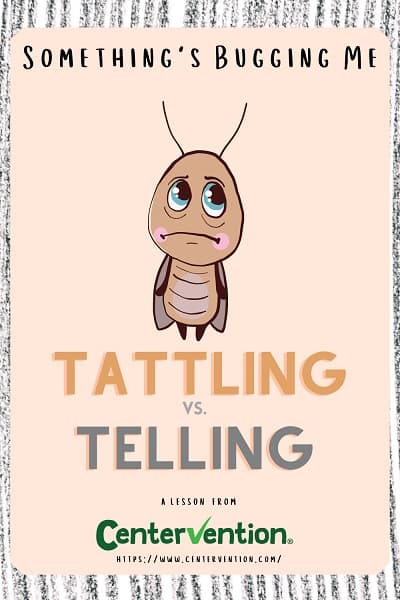While the distinction may appear nuanced, there are clear differences behind the meanings and purposes of tattling vs telling. Tattling is generally associated with reputation, such as when students attempt to get one another in trouble for minor incidents or try to gain favor by making themselves appear heroic, while telling, on the other hand, is an effort to alert an adult to more serious incidents or safety concerns.
Helping students recognize the difference between tattling and telling is a complicated dance that requires direct instruction, practice, and ongoing support in the classroom. While it’s fairly simple for students to understand the necessity for rules and the expectations that they convey, it can be quite another task for children to determine when rule breaking is something that must be reported.
As Dr. Jamie Howard notes,
“Rules work well with young children because their cognitive and moral development allows for mastering a set of simple instructions, and they are motivated to receive praise from adults for following them. For these reasons, kids usually believe it’s the right thing to do to tattle on kids who break the rules. Kids may even think that they are being helpful when they tattle, and might expect praise for it.”
When a student reports to you in either manner, there are a few key things to remember.
First, children may be less compelled to tell when they are fearful they might get in trouble, a friend might get in trouble, or a secret between peers may be compromised, thus breaking trust. Generally, true telling may be a difficult step for a student to take.
On the other hand, tattling is not always frivolous. Adults should be cautious when dismissing tattlers and may recognize that, to the child who is tattling, a situation may feel genuinely significant from their perspective. When rules are broken or feelings are hurt, reporting a minor incident may seem like the right thing to do. If we brush aside a tattler, they may feel invalidated, and their feelings insignificant. With this in mind, it is critical to explain to children that their concerns do matter, while still empowering them to be problem solvers. Teaching children the difference between tattling and telling is not about asking them to accept the unfairness of a rule being broken, it is about pushing them forward to communicate and advocate for themselves and the agreed upon rules and norms.
This lesson gives students a chance to identify the differences between tattling and telling, practice distinguishing between the two, and a tool for reporting concerns, allowing adults the ability to address safety concerns in confidence, and support communication and problem solving between students.
Recommended Grade Level: Elementary and Middle
SEL Skill(s): Communication
Duration: 30 minutes
Materials:
Tattling vs Telling Lesson
Prep: Hang chart paper on the wall and draw a column down the middle. On the left side, write the word Tattling.
Prompt: Ask students to define tattling.
- What is tattling?
- When might someone tattle?
Next, write Telling in the right-hand column. Ask:
- What is telling?
- How is it different from tattling?
- When might someone tell?
Tell students they will play a game to see if they can tell the differences between tattling and telling.
- Have students take turns pulling cards from a bowl and reading them aloud. Decide as a community whether the situation is tattling or telling.
- As cards are sorted, tape them into the correct column on the chart so students can refer to the examples in the future.
Discuss:
Review the chart and notice that telling happens when someone’s safety or property is in jeopardy, but tattling happens when a problem is reported that can be solved on your own or with a friend.
- Choose 1-2 tattling cards and ask students how they might solve the situations on their own.
Plan:
Show students the Something’s Bugging Me slips. Let them know that you hope they will try to solve problems together with their friends, but that they can always come directly to you when something is bugging them, especially a safety concern.
- Show students the slips and model filling one out.
- Dedicate a place for students to submit a slip when they are worried, and commit to checking back in with them within a specified amount of time after receiving a slip.
Note: When beginning this routine, you may receive an influx of slips early on as students come to understand the purpose of the slips. Revisit the chart with individuals or the group often. When possible, check in with each of the students who submit a slip, even if the incident or concern seems minor to you, in order to validate the student’s feelings and to offer support with how to problem solve with peers.
Additional Resources
Related Lessons and Programs
